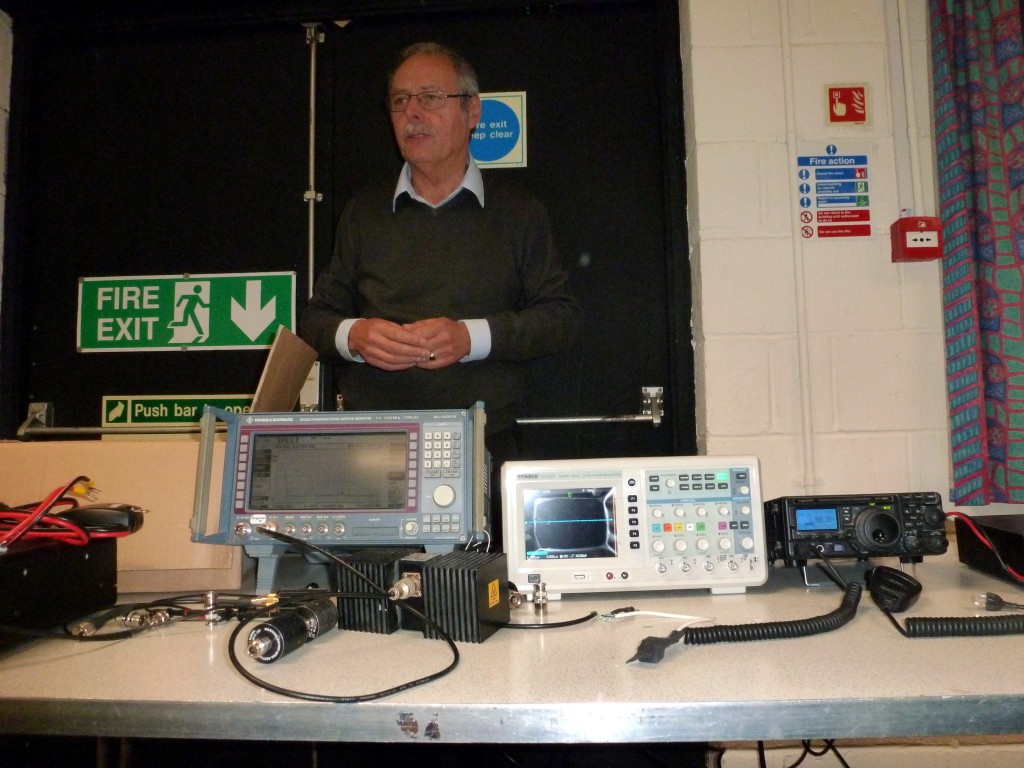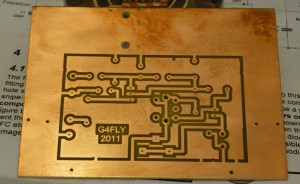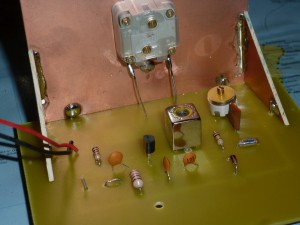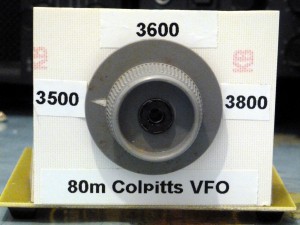Over the following day’s I was showing a little more interest regarding what post had arrived at home first to arrive was the active antenna then a week later the sentinel receiver. When I came home from college on Tuesday 9th September my son Peter 2E0SQL told me that mum had giving the go ahead to set the new kit up under test to make sure it was all working properly and during the afternoon he had checked over his old tower computer that we had made together just before he went to college.
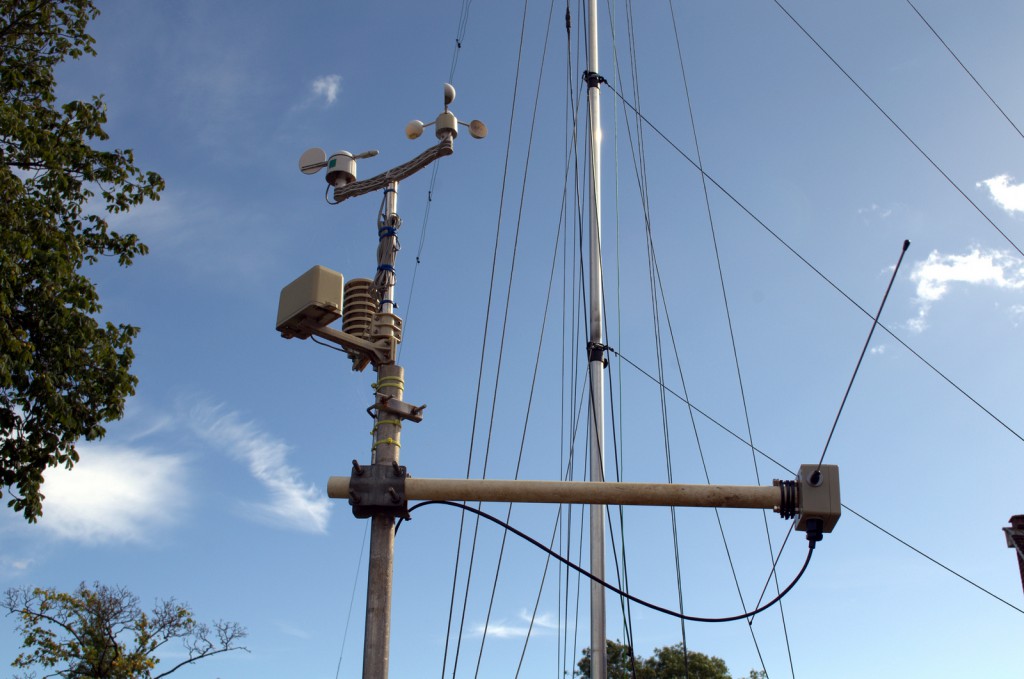
We did not want to add to the number of poles in the garden so we mounted the active antenna on the same pole as the weather station not forgetting to mount it away from the metal pole on a short length of plastic water pipe
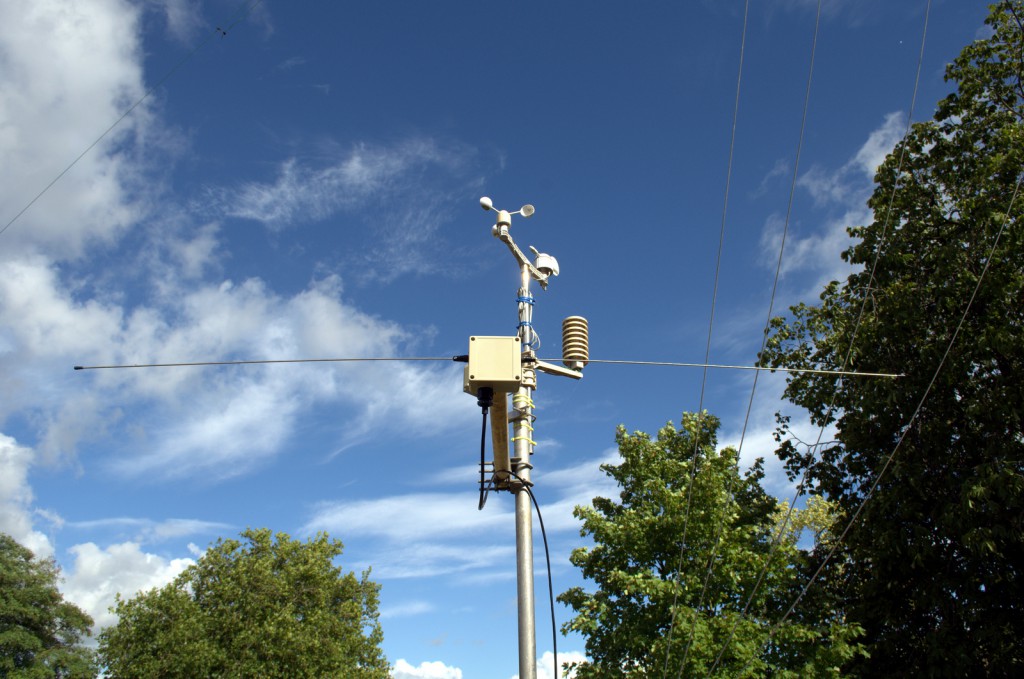
we kept the 20m of outdoor Ethernet cable off the ground this is to avoid the possibility of any little four legged furry animals having a chew at the cable. We had already decided that the best place to put the tower and sentinel receiver was in the outdoor toilet and coal house our radio shack is located above it and we could remotely control the equipment from the shack.
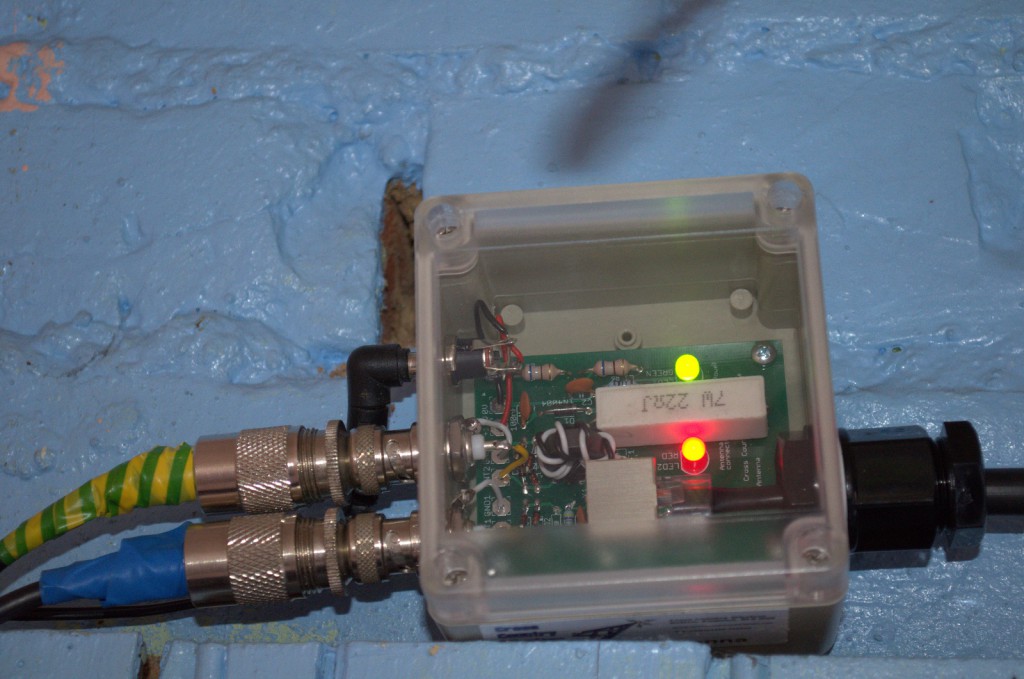
There are two RF outputs on the antenna base unit and Peter suggested that we connected a short length of coax from the sack through the floor to this unit so that we could connect it to the Funcube dongle Pro+
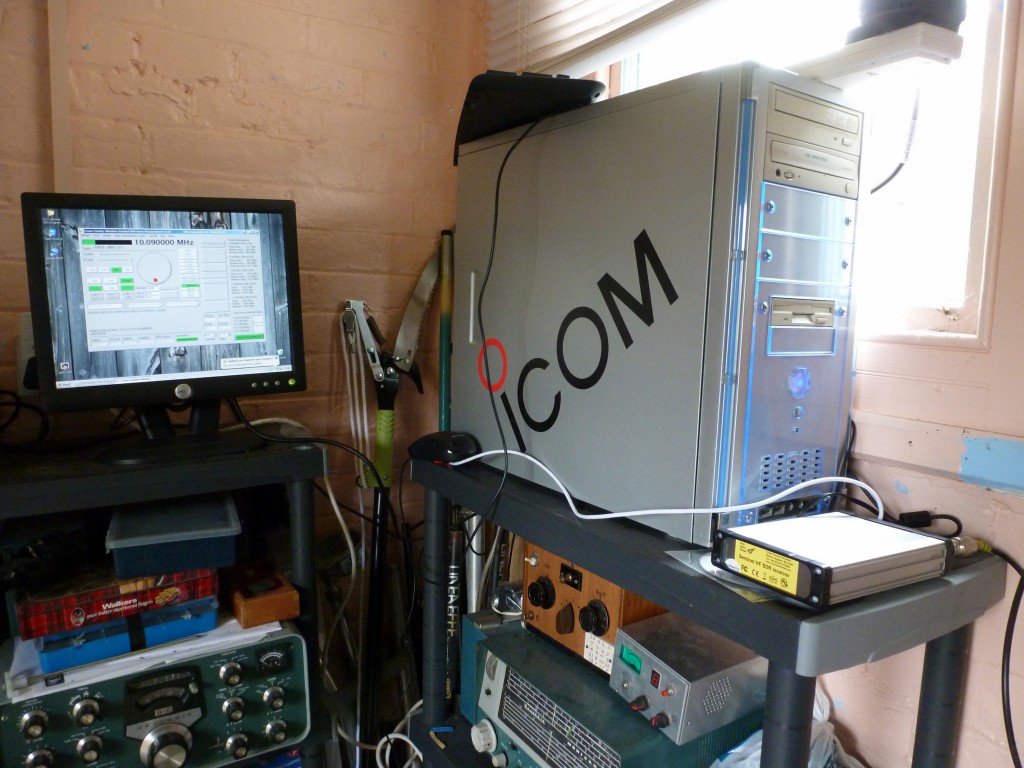
At the present time we have set things up under test and over the coming few weeks we plan to tidy the layout up however it will do for the time being.
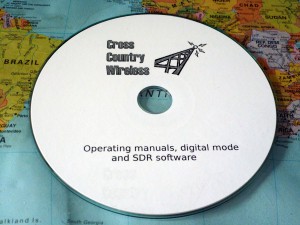
Having set the receiving station up it was time to see if it worked Cross country wireless provided a CD with the “operating manuals, digital mode and SDR software” all you have to do is load the CD onto the computer. If only it was that easy experience has taught me that often when it comes to using software it’s not like opening a tin of Ronseal “it does exactly what it says on the tin”
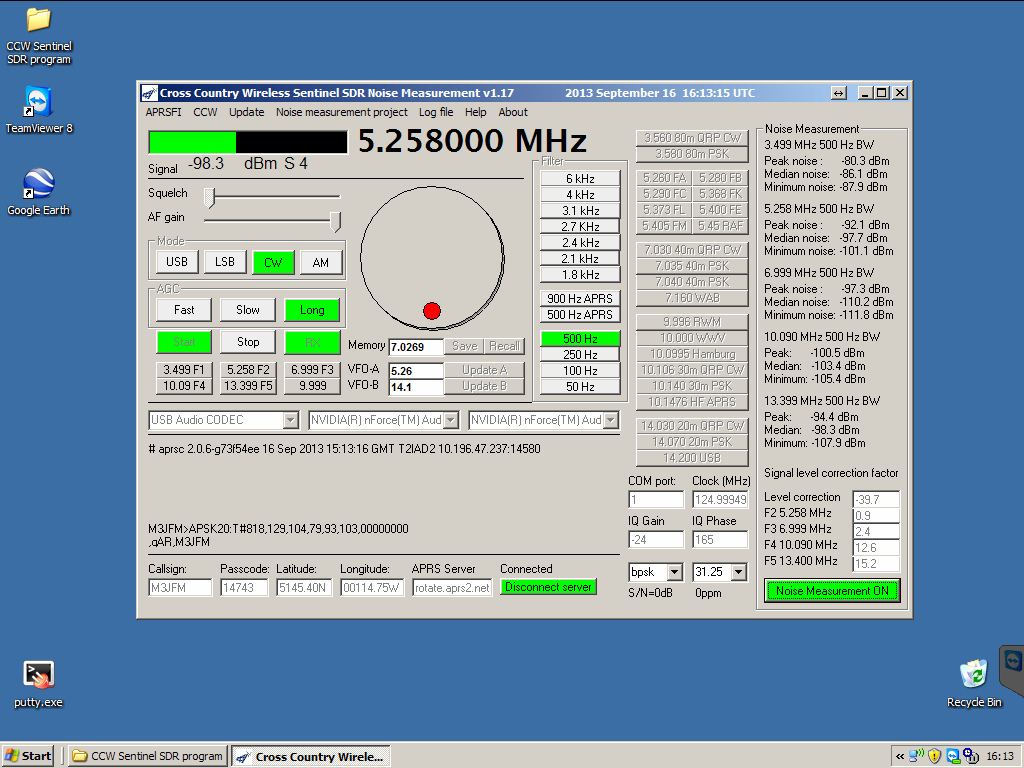
I left this part of things to Peter “2E0SQL who set the software up and got it working I understand from Peter that the software provided was a little buggy by which Peter was saying:
“A software bug is an error, flaw, failure, or fault in a computer program or system that produces an incorrect or unexpected result, or causes it to behave in unintended ways. Most bugs arise from mistakes and errors made by people in either a program’s source code or its design, or in frameworks and operating systems used by such programs, and a few are caused by compilers producing incorrect code. A program that contains a large number of bugs, and/or bugs that seriously interfere with its functionality, is said to be buggy. Reports detailing bugs in a program are commonly known as bug reports, defect reports, fault reports, problem reports, trouble reports, change requests, and so forth”.
To be honest for someone like me if the software said type in X and I did just that and then it did not work I would soon grow discouraged – thank goodness that Peter 2E0SQL got the Sentinel SDR noise measurement receiver and SDR program to accurately measure the HF noise floor and send telemetry reports by APRS. You can find me on aprs.fi as m3jfm.


